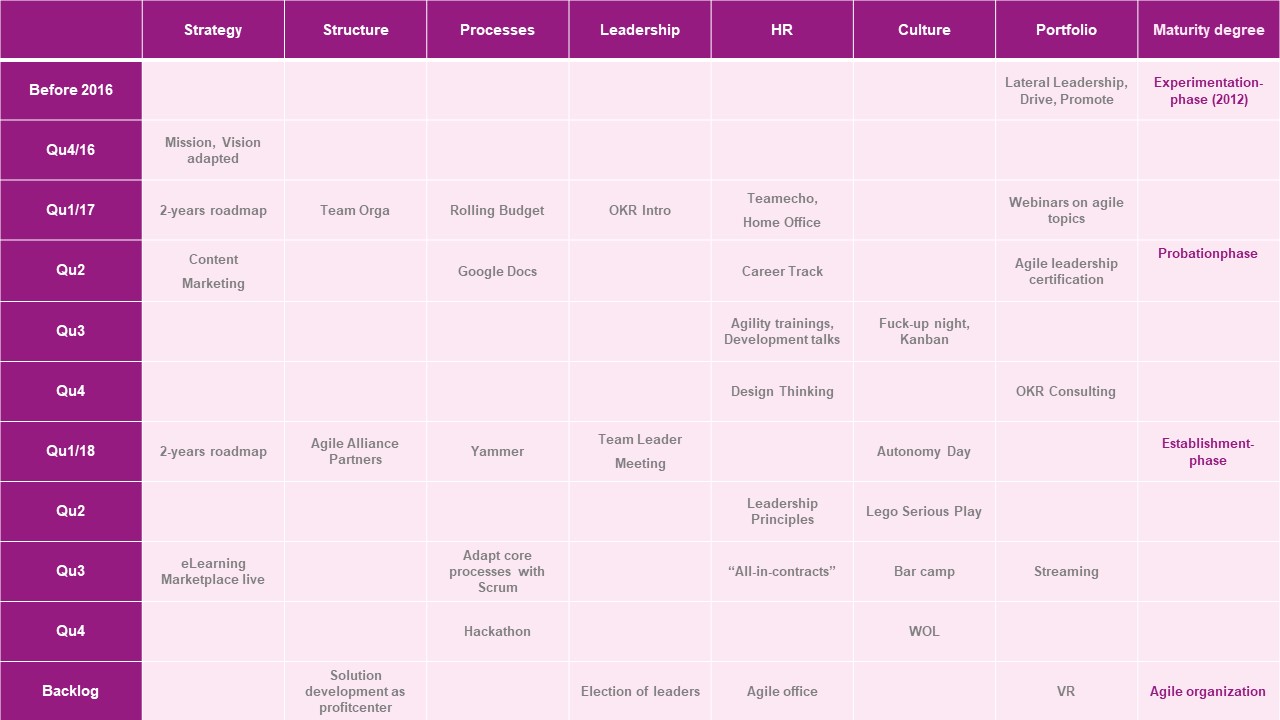The whole agile leadership idea is based on the observation, that accelerated change is the norm. What does that mean for change management? The classical concepts of Kübler-Ross (change curve) and Kotter (8 steps model) are still a good inspiration to describe what happens in change and what to do, but perhaps not sufficient to deal with agile transformation.
Agile transformation usually means that a whole company or business unit is becoming agile. Many companies are striving for that. There are 2 main approaches: Big bang and incremental.
Paypal is an example for a successful big bang transformation moving 510 cross-functional teams from waterfall to agile within less than a year. They moved from project-driven to product-line discipline in order to develop clear accountability and intense customer focus. Productivity and profitability rose significantly.
Most companies go for incremental, which can also work fine. It depends on how big is the urge for change and on the organizational interdependencies. If e.g. agile teams depend on waterfall teams and the delivery does not work smoothly, it might be better to change the approach in the whole business unit at the same time. Incremental is already an agile principle and it is better to start somewhere in the organization than to postpone to a future far away.
As I only want to write about things, that I have personal experience with, I want to share our own agile transformation story. I am the CEO of MDI – Management Development International. MDI provides leadership development solutions. In 2016 we have been invited to support the implementation of OKR (objectives and key results) in an international top brand company with approx. 300.000 employees. We decided to introduce OKR to our own company with about 40 employees and 150 freelance trainers first.
This was like a domino stone falling and generating a chain reaction. We decided to also implement a rolling budget, changed to a customer-centric team structure, adjusted our mission and vision statement and started to try out one agile method after the other. Some stayed one time experiences and others became routine and part of the company DNA.
After a while, we thought it would be helpful to have an overview of what we are doing in which areas, in order to develop in a balanced way. Being inspired by the Story map of HR Pioneers*, we visualized a “Change journey map”:

















